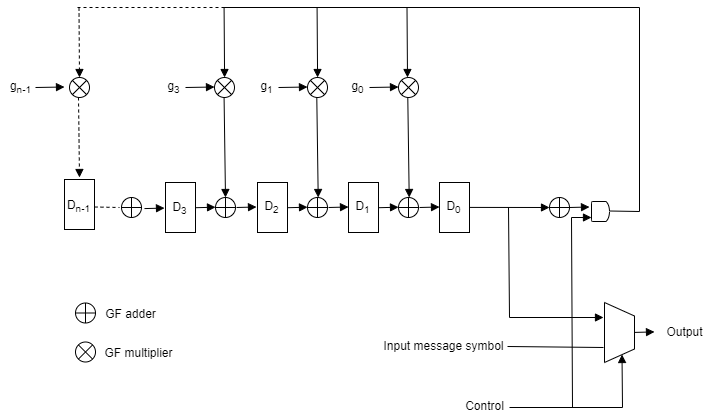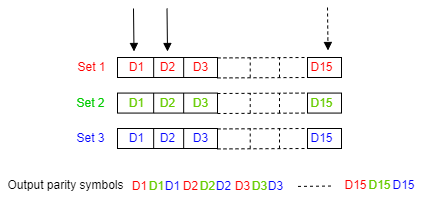CCSDS RS Encoder
Libraries:
Wireless HDL Toolbox /
Error Detection and Correction
Description
The CCSDS RS Encoder block encodes message symbols into a Reed-Solomon (RS)
codeword according to the Consultative Committee for Space Data Systems (CCSDS) standard [1]. The block accepts message
symbols and a samplecontrol bus and outputs encoded codeword data, a
samplecontrol bus, and a nextFrame signal that
indicates when the block is ready to accept new input message symbols.
The block also supports shortened message lengths. You can use this block in a CCSDS transmitter for satellite communication. The block provides an architecture suitable for HDL code generation and hardware deployment.
Examples
Ports
Input
Output
Parameters
Algorithms
References
[1] TM Synchronization and Channel Coding. Recommendation for Space Data System Standards. CCSDS 131.0-B-3. Blue Book. Issue 3. Washington, D.C.: CCSDS, September 2017.
[2] TM Synchronization and Channel Coding. Summary of Concept and Rationale CCSDS 130.1-G-3. Green Book. Issue 3, June 2020.
[3] Hsu, In-Shek , et al. "The VLSI Implementation of a Reed— Solomon Encoder Using Berlekamp’s Bit-Serial Multiplier Algorithm." IEEE Transactions on Computers, vol. C–33, no. 10 (October 1984): 906–11. https://doi.org/10.1109/TC.1984.1676351.
Extended Capabilities
Version History
Introduced in R2022a
See Also
Blocks
Functions
ccsdsRSDecode(Satellite Communications Toolbox) |ccsdsRSEncode(Satellite Communications Toolbox)




